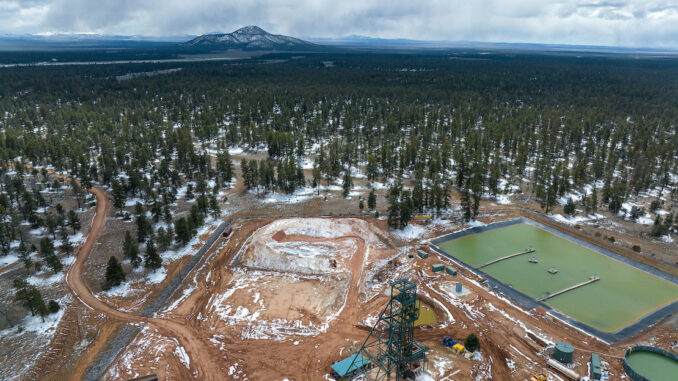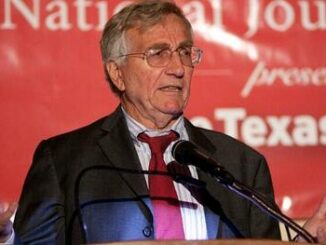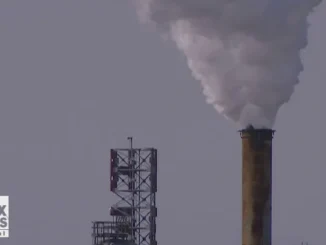
If President Joe Biden creates a national monument around the Grand Canyon, that doesn’t mean the long fight over potential uranium mining in the area will end.
A monument designation would halt new mining projects but wouldn’t necessarily curb all activity or quell the decadeslong clash that’s pitted mining companies against tribes and environmentalists.
Biden is traveling to Arizona this week, where on Tuesday the White House has said he will “highlight the Biden administration’s historic investments in conservation and protecting our natural resources.”
Three people with conservation groups last week said they expect the president to announce permanent protections for lands outside the Grand Canyon National Park.
Biden has faced increasing pressure from Native American tribes and environmental groups to protect the lands through a monument designation, with advocates saying they are concerned about the potential for uranium extraction to contaminate water supplies in the parched Southwest.
In recent months, a coalition of bipartisan lawmakers and tribes, including the Havasupai and Hopi, have pushed the administration to create the 1.1-million-acre Baaj Nwaavjo I’tah Kukveni Grand Canyon National Monument.
Proponents of the monument argue the land is culturally significant to tribes in the area. Baaj Nwaavjo means “where tribes roam” for the Havasupai Tribe, and I’tah Kukveni means “our footprints” for the Hopi Tribe.
But the possibility of Biden creating a new monument is already infuriating Republicans from mineral-rich states and a mining sector that’s accused the president of doing little to spur domestic production — a priority for both the administration and Congress, particularly with U.S. importing fuel from Russia.
House Natural Resources Chair Bruce Westerman (R-Ark.) in a Friday statement blasted the administration for blocking mining in Minnesota, Colorado and now Arizona, where he said researchers have found “some of the richest uranium deposits in the country.”
“If President Biden moves forward with this insane proposal, I will fight it in Congress and advocate for responsible stewardship of our resources,” Westerman said.
A monument designation would likely block companies from staking new mining claims in an area of the U.S. known for rich deposits of uranium, a radioactive metal key to making fuel for nuclear reactors.
Most monument proclamations since 1996 have barred new mineral leases, mining claims, prospecting or exploration activities, while carving out protections for valid, existing rights, according to a recent report from the Congressional Research Service.
Legal experts say it could also throw existing claims into question unless companies can show they can mine the claim at a profit.
“It’s frankly very unlikely that any existing claims would be valid,” said John Leshy, who served as Interior’s solicitor during the Clinton administration and is now an emeritus professor at the University of California College of the Law in San Francisco. “But that’s a fact question, and you’d have to go claim by claim.”
Companies eager to mine in the area have argued they have valid and existing rights. What’s more, mining advocates say a national monument designation would throw Biden’s own climate and national security strategy into question.
They’re quick to note that the U.S. currently relies on Russia for a share of its low-enriched uranium. And with the war in Ukraine pushing up prices, they argue the need for advancing extraction and rebooting idled mines has only grown in importance.
Mark Chalmers, president, CEO and director of Energy Fuels Inc., a Colorado-based mining company with claims covering about 200 acres on federally managed public lands outside the national park, said the area is already off limits to new mining under a 20-year moratorium that the Obama administration imposed in 2012.
That moratorium, slated to expire in January 2032, allows only a handful of mining projects to advance while providing federal regulators time to study the effects of mining on watersheds and aquifers in the parched region.
“To say this is rushed is an understatement. It’s circumventing due process,” said Chalmers. “This is absolutely, completely unnecessary right now.”
‘Those scars don’t heal’
Buzz around a potential monument designation in and around the Grand Canyon arrives after months of lobbying by Arizona lawmakers, tribes and environmental groups.
In April, Sen. Kyrsten Sinema, an independent, and Rep. Raúl Grijalva, the top Democrat on the House Natural Resources Committee, joined a coalition of tribes in floating a proposal to create the monument.
And last month, Sinema and Democratic Sen. Mark Kelly of Arizona released a bill, S. 2262, which would create the monument and remove those lands from the federal mining law.
At the same time, Grijalva introduced a sister bill, H.R. 4580, in the lower chamber with Democratic Arizona Reps. Ruben Gallego and Greg Stanton.
Those calls received a boost in May when Interior Secretary Deb Haaland visited the canyon with Grijalva and Sinema staffers and met with tribal leaders, local elected officials and community members.
Earlier this month, the Forest Service and the Bureau of Land Management held a public meeting in Flagstaff, Ariz., on July 18 to gather public comment around creating a monument.
More than 200 people attended the meeting, according to an article in The Arizona Republic.
Proponents of the monument at the meeting said the designation would protect tribal communities, heritage sites and watersheds from the effects of mining, while opponents blasted what they said was an overreach by the federal government that could harm private ownership and harm industries like cattle ranching.
“Throughout history, native lands have been poisoned by mining and scarring,” Hopi Tribe Chair Timothy Nuvangyaoma said at the meeting, according to the newspaper. “Those scars don’t heal.”
‘The government would be breaking the law’
A designation would mostly directly affect Energy Fuels, one of the largest producers of uranium in the nation that’s invested hundreds of millions of dollars in the area and claims it has valid, existing rights there, some of which were grandfathered.
“The government would be breaking the law if they took away those valid and existing rights,” said Chalmers with Energy Fuels.
Much of the attention has focused on the Pinyon Plain underground uranium mine, which Energy Fuels operates and was first permitted by the Forest Service in 1986 on 17 acres within the Kaibab National Forest.
The mine and Energy Fuels’ other existing mining operations and claims are located on land that could be covered by the national monument designation near the Grand Canyon.
Pinyon Plain, which has never produced uranium, has been at the center of a legal battle in which the federal government has repeatedly defended its approval of the project, a point that Chalmers is quick to highlight.
“It’s the most litigated mine in the history of the United States mining industry, and it has always persevered for all the right reasons in that it wasn’t going to damage the environment,” he said. “It followed due process over the decades.”
Chalmers also emphasized that this mine could move forward with producing uranium ore whenever the company decides it makes sense. “We can mine within a week. It’s operational, and we plan to start mining soon,” he said.
Chalmers acknowledged there are environmental issues tied to abandoned uranium mines across the West that were dug in the 1940s and ’60s during the Cold War and largely funded by the federal government. But he insisted that federal research has not connected modern-day mining to that level of pollution.
The U.S. Geological Survey in 2021, for example, released a report showing that almost all of the 200 water samples taken in and around the Grand Canyon since the 1980s showed uranium concentrations below the federal maximum drinking water standard.
Scott Melbye, president of the Uranium Producers of America, said it’s “disingenuous” for the Biden administration to aggressively pursue a “green energy economy” while potentially blocking domestic uranium production.
But proponents of permanent protections say water quality is their driving focus. Indeed, the land surrounding the Grand Canyon is home to communities that rely on groundwater, including the Havasupai and Hualapai nations, the towns of Tusayan, Williams, and Jacobs Lake, and the Grand Canyon National Park, which is visited by as many as 6 million people each year.
In 2019, a federal health official told congressional lawmakers an ongoing study by the University of New Mexico of Navajo women and babies found roughly a quarter of those who participated suffered from high levels of uranium and radioactivity within their bodies.
Radioactive particles can have devastating effects on the human body, increasing the likelihood of a person developing lung and bone cancer, poor kidney function and other health issues.
Carletta Tilousi, coordinator of the Grand Canyon Tribal Coalition and a member of the Havasupai Tribe, said the Pinyon Mine and other proposed projects are within miles of mountains considered sacred to her tribe and aquifers that provide drinking water and support critical ecosystems.
“Permanent protections around the Grand Canyon are important because there are currently [598 active mining claims] within the proposed national monument right now,” she said. “Once this monument is passed, it will eliminate those active claims.”



